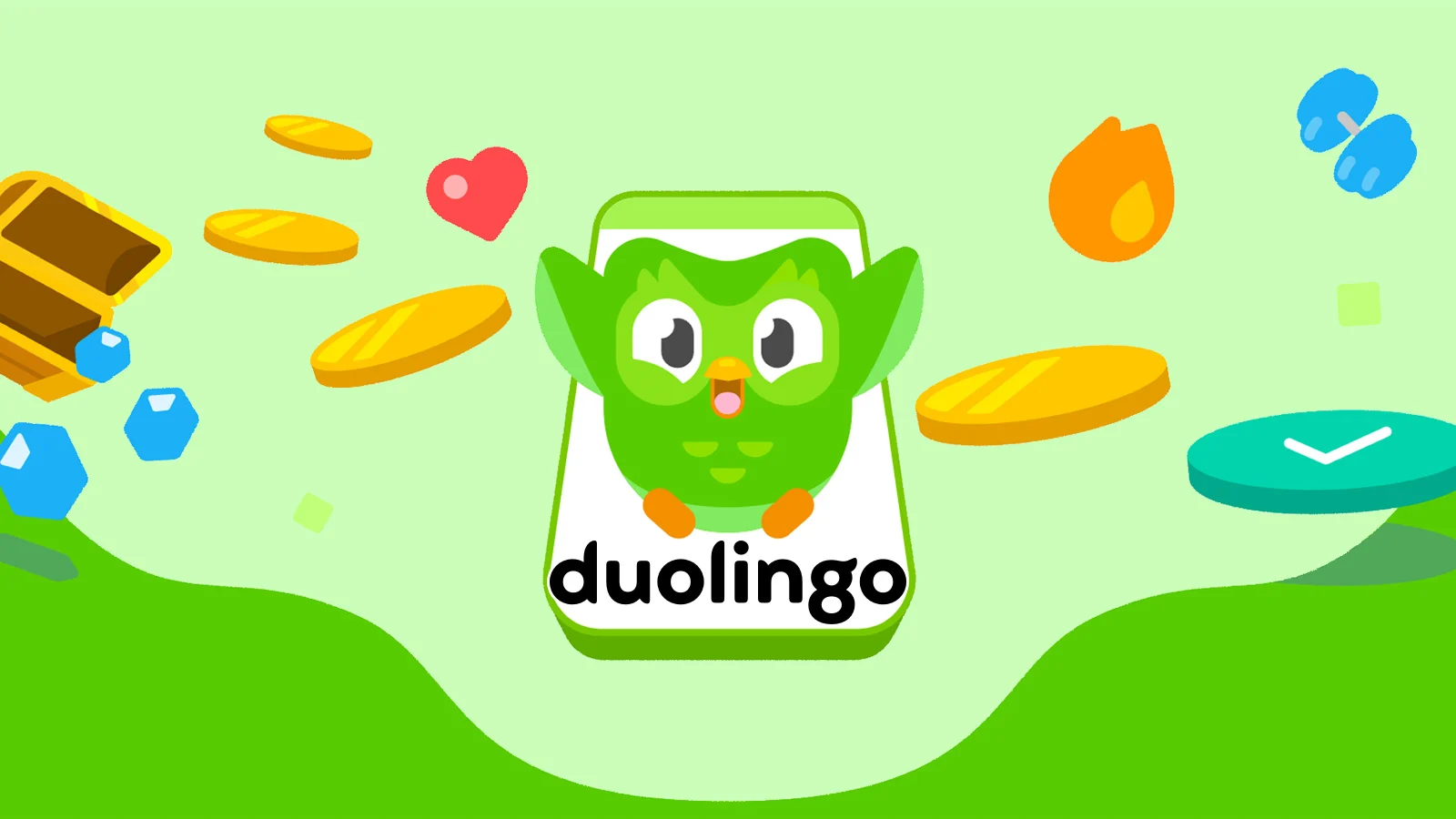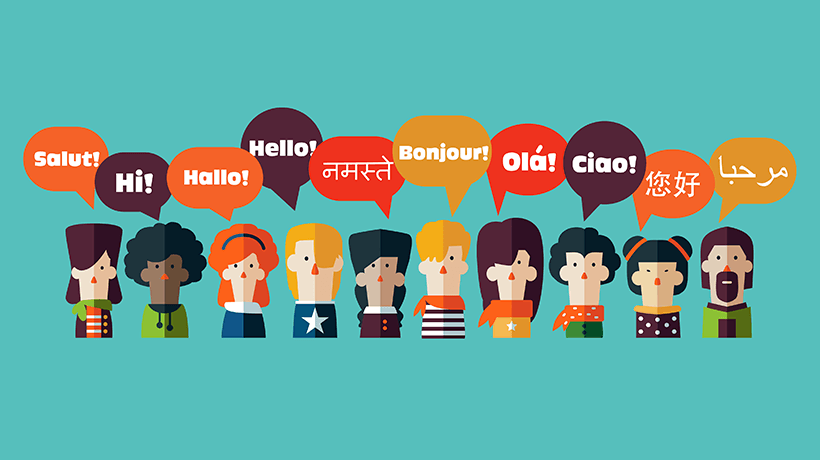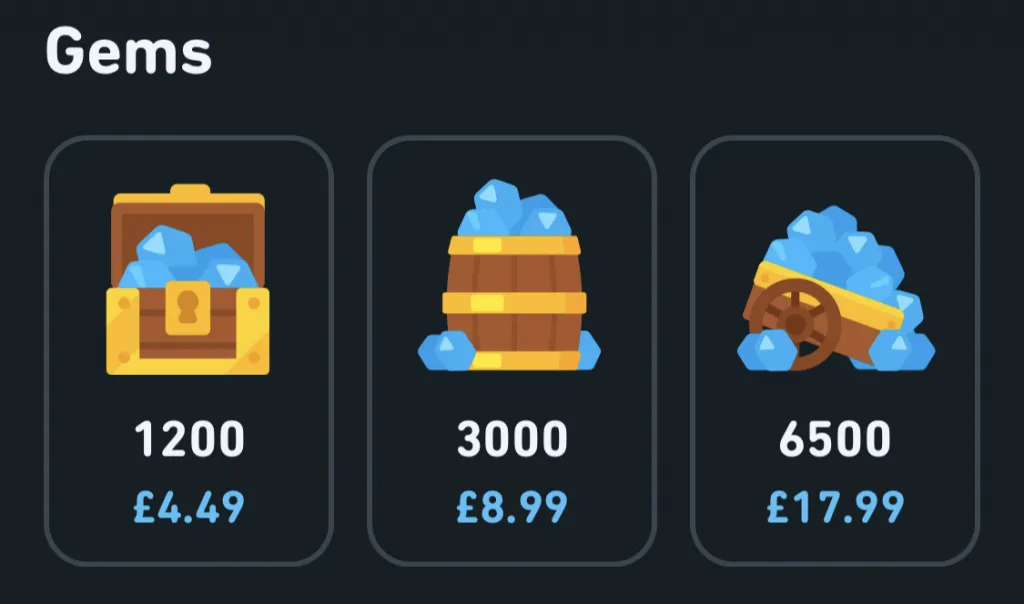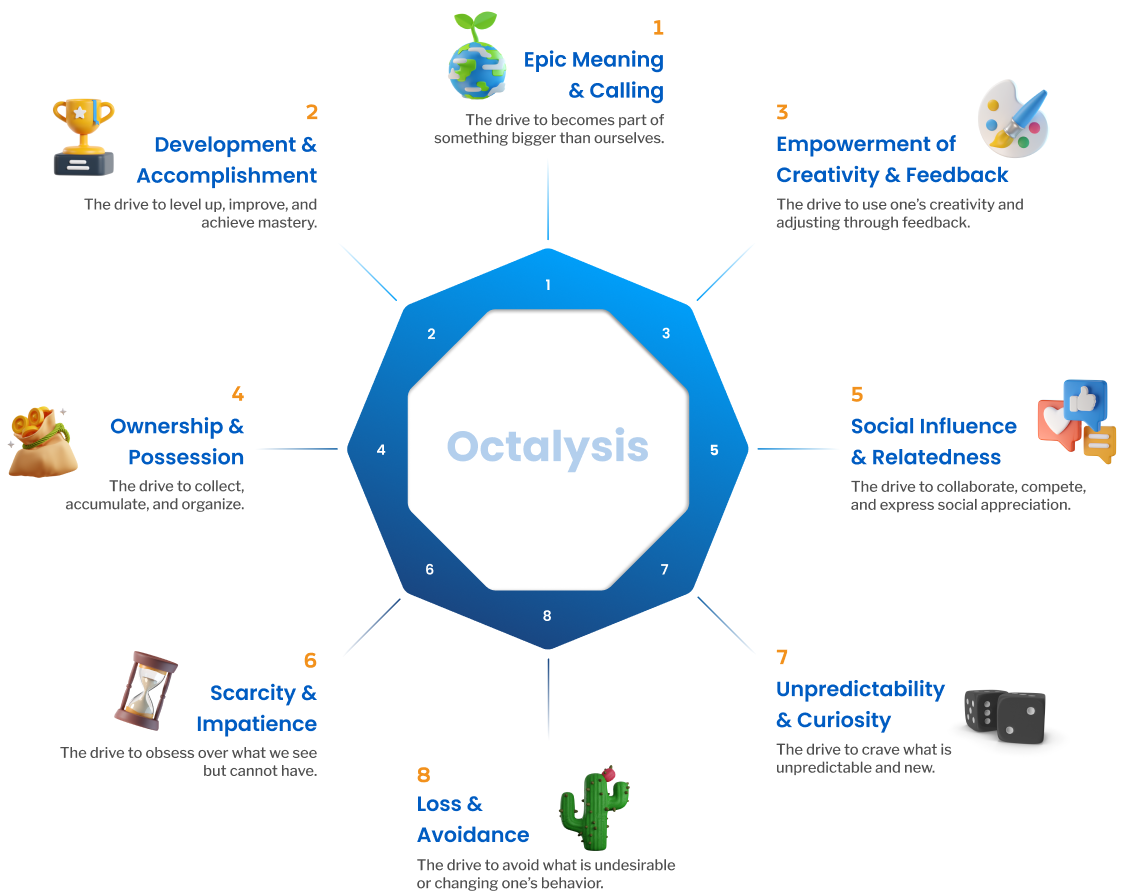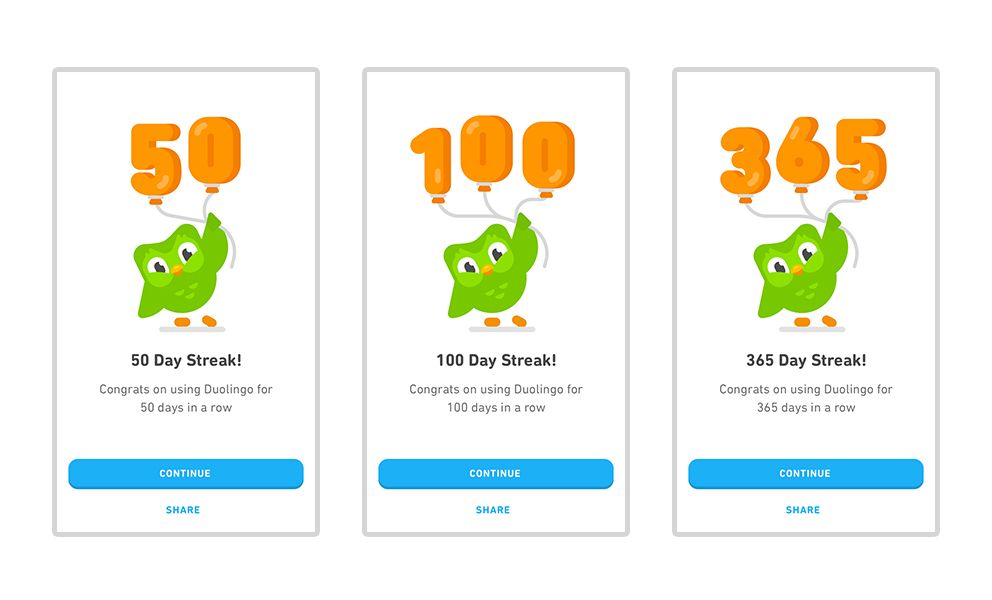Have you ever thought: “I want to learn to speak _____”?
That same energising thought got 300 million people to try out Duolingo, a freemium tool to learn any of 36 (and rising) languages. These include little-spoken tongues like Hawaiian and Scottish Gaelic and even fictional languages like Klingon (Star Trek) and High Valyrian (Game of Thrones).
Duolingo is surely doing something well to achieve these numbers. However, it took them years to slowly start to get it right. From this Duolingo review, I will show you the way to create a design that is engaging from the first release.
Duolingo Review
Duolingo has an appealing, playful design and a smooth Onboarding experience. Choose the language you want to learn, set a daily goal and immediately start completing guided exercises.
The exercises are short, only 10 questions long at first, and shouldn’t take more than 2-3 minutes to complete. Several embedded game mechanics add motivational boosts to make sure that new users reach their first win-states quickly:
A progress bar shows how close you are to completing the exercise. Each correct answer is rewarded with an encouraging sound effect. In between questions, Duo, the mascot owl, will comment on how great you are doing.
Reaching the win-state rewards Gems and EXP. And every completed exercise adds to the expansion of the Skill Tree that tracks the learning progress of the user.
‘Play’ some more and you will start to earn Achievement Badges and climb the Leaderboards.
The before mentioned elements are what comes to mind for most people when they think of Gamification examples. These game mechanics have one thing in common; they all leverage Core Drive 2: Development and Accomplishment.
Octalysis Analysis
The Octalysis framework is a powerful tool to analyse any experience in terms of how well it motivates the target audience to do the Desired Actions. The key to Octalysis is that it breaks down human motivation into eight Core Drives.
Core Drive 2 (CD2) is an extrinsic motivator. It is effective for drawing in new users and to create Effort Justification, making the user feel good about the time they spent in the experience.
However, it takes a lot more to create effective designs with long-lasting motivation. Getting users to come back day after day requires a balanced design that provides motivation from all eight Core Drives.
The Eight Core Drives of the Octalysis Framework.
Streak Design
To motivate its users to return daily, the Duolingo Gamification team implemented a basic streak design. When you reach your daily EXP goal, a fire lights up and shows for how many consecutive days you have kept the fire burning. Miss one day and the streak is reset to zero. If time is running out, the app will send notifications to urge you to save the streak.
To do this Duolingo review, I kept up a 24-day streak. That accomplishment felt pretty good (CD2)! But the longer the streak, the more CD8: Loss and Avoidance comes into play. It becomes a Sunk Cost Effect; you really don’t want to miss a day after having invested so much in it already.
CD8: Loss and Avoidance is a powerful, urgent motivator. And it does work to drive daily activity from Duolingo users. There are currently even over 700 Duolingo users with an impressive streak longer than 2000 days! But there is a flip-side.
The daily stress of having to make sure not to lose your streak becomes more and more draining. For most people, it will start to feel like a burden and they will burn out eventually. After having missed a day, and breaking the streak, many users just quit completely.
The many jokes and memes that can be found online indicate the intensity of these emotions.
Over-Justification Effect
So what happened here? Almost all users try out Duolingo because they have a good amount of intrinsic motivation to start with, eager to learn a new language, where did that go?
What happened is the Over-Justification Effect. The extrinsic stimuli at first support what a person intrinsically wants to do, but in the long run they replace the intrinsic motivation. When the external stimuli then disappear, there is no motivation left.
What this Duolingo review shows, can also be seen in schools; where the focus on getting good grades can undermine a child’s innate passion for learning. As well as in business; when managers hand out a bonus to motivate their employees and find that, to keep up the motivation, they need to keep handing out higher and higher bonuses.
To prevent this from happening it is important to transition to more intrinsic Core Drives after Onboarding, like CD3: Empowerment of Creativity.
Duolingo Gamification Evolution
One thing Duolingo does well is learning. By gathering user data, Duolingo doesn’t only learn how people best learn a language, but also what does and doesn’t seem to work to keep their users motivated.
And they are not afraid to try out different approaches to test, in real life, how that affects user performance and motivation. The User Interface, for example, gets tweaks every few weeks.
When Duolingo reviewed the data, they also recognised there was a problem with the streak design being too Black Hat, so they tried different features to reduce the strain.
A few years ago you could spend a few dollars to restore a broken streak. Giving users this option to save the streak can help a little, but having to spend real money also further increases the perceived weight of the Sunk Cost effect.
More recently this option was replaced with one free ‘Streak Repair’ per month for premium members, as well as a ‘Streak Freeze’ item that can be bought in the in-app shop with Gems. Having a Streak Freeze equipped allows for missing one day without breaking the streak, creating some much-needed breathing space.
More good features, that leverage some of the other Motivational Core Drives, have been added through the years. Like the option to follow friends (CD5: Social Influence), a free ‘Double EXP Potion’ that will sometimes, at random, appear in the shop (CD 7: Unpredictability) and the option to customise the experience by buying different outfits for Duo (CD4: Ownership).
A Better Approach than Trial and Error
Writing this Duolingo review reminded me of a workshop I once attended, held by somebody with a PhD in Gamification. And how disappointed I felt afterwards.
He strongly emphasised the need for rapid prototyping. Because, in his words: “After you come up with an idea, you need to test it to see if it works or not. And you just keep on trying and trying until you find something that sticks”.
Likewise, it took Duolingo years of trial and error to reach this point of being a decent human-focused experience. At the cost of losing demotivated users along the way. And there is still plenty of room for improvement. In the words of Gilani, Duolingo product manager: “AB testing and iterative changes will continue to roll out to further enhance the experience”.
Luckily there is a faster way. By applying the Octalysis Framework it is possible to accurately predict what will and what won’t work for your target audience. Unlocking the potential to create a balanced design that is highly impactful for each phase of the User Journey.
The four phases of the User Journey.
Get Started Today!
After reading this Duolingo review, you now know what is at the foundation of crafting truly engaging experiences. But to create a design that will successfully draw new users in, and keep them motivated for years, is easier said than done. This requires study and practice. A great starting point to increase your knowledge is Octalysis Prime, the gamified learning experience. Or you can check out more Gamification examples.
If you need to get started on your project right away, and want to make sure to get it right from the first release, you will want help from the top experts in the field. Don’t hesitate to contact us a free initial consult.
